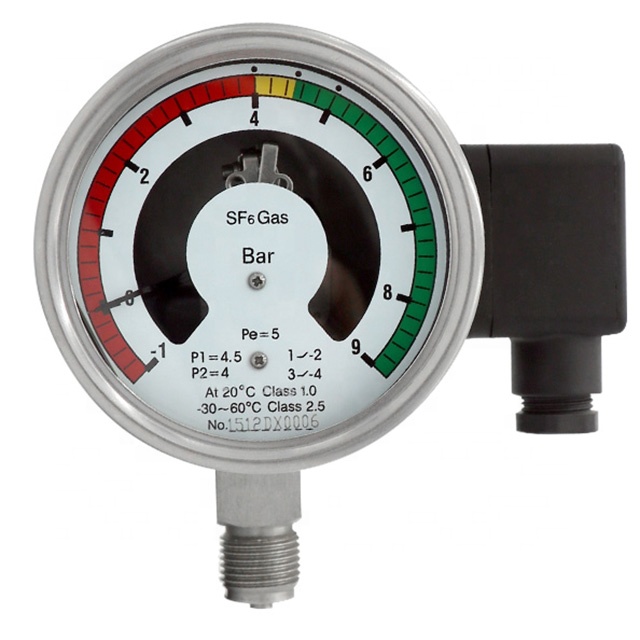Definition:
Lightning arrester: an electrical appliance used to protect electrical equipment from high transient overvoltage hazards during lightning strikes, and to limit the freewheeling time and often limit the value of freewheeling. Lightning arresters are sometimes also called overvoltage protectors, overvoltage limiters.
Scope of application:
AC gapless metal oxide arresters are used to protect the insulation of AC power transmission and transformation equipment from lightning overvoltage and operating overvoltage damage. It is suitable for overvoltage protection of transformers, transmission lines, distribution panels, switch cabinets, power metering boxes, vacuum switches, parallel compensation capacitors, rotating electrical machines and semiconductor devices.
Features and principles:
The AC gapless metal oxide arrester has excellent nonlinear volt-ampere characteristics, good response characteristics, no freewheeling, large current capacity, low residual voltage, strong ability to suppress overvoltage, anti-pollution, anti-aging, not subject to altitude constraints, It has the characteristics of simple structure, no gap, tight sealing, long life, etc. Under the normal system working voltage, the arrester presents a high resistance state, and only microampere current passes through. Under the action of overvoltage and high current, it presents low resistance, thus Limits the residual voltage at both ends of the arrester
Classification:
There are many kinds of arresters, including metal oxide arresters, line-type metal oxide arresters, gapless line-type metal oxide arresters, fully insulated composite jacket metal oxide arresters, and detachable arresters.
The main types of arresters are tubular arresters, valve arresters and zinc oxide arresters. The main working principle of each type of arrester is different, but their work is essentially the same, all to protect communication cables and communication equipment from damage.
Effect:
The arrester is connected between the cable and the ground, usually in parallel with the protected equipment. The arrester can effectively protect the communication equipment. Once an abnormal voltage occurs, the arrester will act and play a protective role. When the communication cable or equipment is running under normal working voltage, the arrester will not work, and it is regarded as an open circuit to the ground. Once a high voltage occurs and the insulation of the protected equipment is endangered, the arrester will act immediately to guide the high-voltage surge current to the ground, thereby limiting the voltage amplitude and protecting the insulation of communication cables and equipment. When the overvoltage disappears, the arrester quickly returns to its original state, so that the communication line can work normally.
Therefore, the main function of the arrester is to cut the invading flow wave and reduce the overvoltage value of the protected equipment through the function of the parallel discharge gap or the nonlinear resistor, so as to protect the communication line and equipment.
Lightning arresters can be used not only to protect against high voltages generated by lightning, but also to protect against operating high voltages.
The function of the arrester is to protect various electrical equipment in the power system from being damaged by lightning over the type of arrester voltage, operating overvoltage, and power frequency transient overvoltage impact - an electrical appliance. The main types of arresters are protective gap, valve arrester and zinc oxide arrester. The protection gap is mainly used to limit the atmospheric overvoltage, and is generally used for the protection of the incoming line section of the distribution system, lines and substations. Valve-type arresters and zinc oxide arresters are used for the protection of substations and power plants. In systems of 500KV and below, they are mainly used to limit atmospheric overvoltage. Backup protection.
How to choose the arrester:
(1) First fix the base of the arrester, and then install each unit (section) of the arrester group by group from bottom to top.
(2) The arrester has passed the assembly test and passed the assembly test before leaving the factory. The on-site installation should be assembled in strict accordance with the manufacturer's serial number, and cannot be interchanged, so as not to change the characteristics.
(3) Valve arresters with series and parallel cathodes should be selected during installation, so that the nonlinear coefficients between the in-phase combined units are close to each other, and the difference should not be greater than 0.04.
(4) The contact surface of the arrester should be wiped clean, the oxide film and paint should be removed, and a layer of electrical compound grease should be applied.
(5) The arrester should be installed vertically with a sag deviation of not more than 2%. If necessary, a metal sheet can be placed between the flange surfaces to correct. The three-phase centers should be on the same straight line, the nameplate should be located on the same side that is easy to observe, the pressure equalizing ring should be installed horizontally, and finally the gap should be smoothed with putty and painted with paint.
(6) Tighten the insulator string to make it tight, and the tension of each application in the same phase should be balanced to prevent the arrester from being subjected to additional tension.
(7) The discharge counter should be well sealed, reliable in action, and in the same three-phase installation position for easy observation. The grounding is reliable, and the counter indicates that the zero position is restored. .
(8) The exhaust passage of the zinc oxide arrester should be unobstructed, and the exhaust gas should be avoided during installation, causing short circuit between phases or flashover to the ground, and should not be sprayed on other equipment.
 The principle, types and functions of Density Monitors
The principle, types and functions of Density Monitors